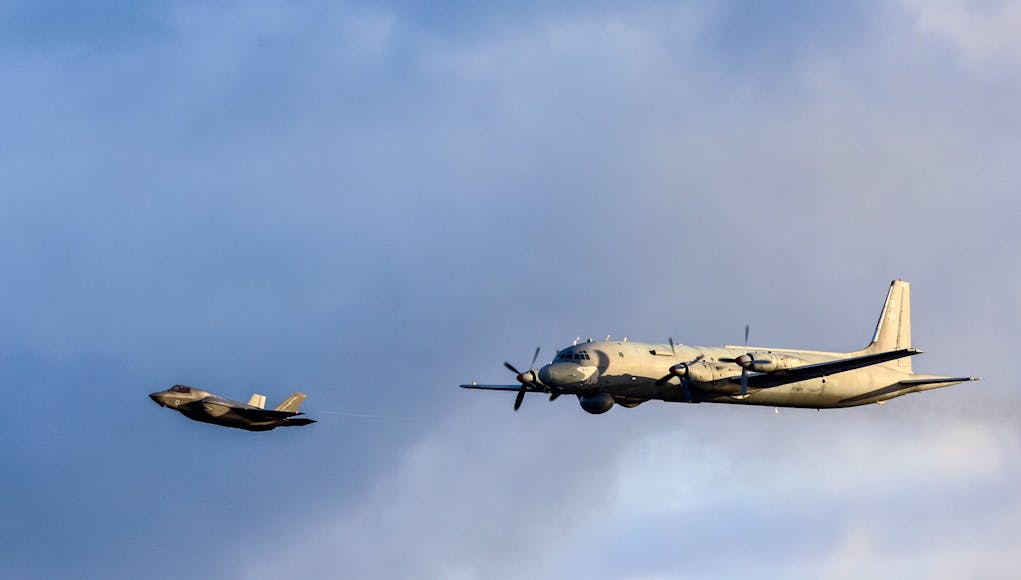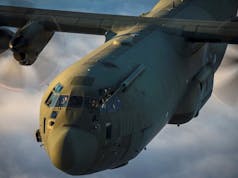F-35B jets launched from HMS Queen Elizabeth were joined by Norwegian F-35As to escort a Russian Maritime Patrol Aircraft flying in proximity to HMS Queen Elizabeth and her Carrier Strike Group.
The incident was highlighted in a tweet by the official UK Carrier Strike Group Twitter account.
“UK F-35Bs launched from the deck of @HMSQNLZ and flew alongside @Forsvaret_No Norwegian F-35As to escort a Russian Maritime Patrol Aircraft as it flew in proximity to UK Carrier Strike Group. #UKCSG23 #JEFtogether”.
UK F-35Bs launched from the deck of @HMSQNLZ and flew alongside @Forsvaret_No Norwegian F-35As to escort a Russian Maritime Patrol Aircraft as it flew in proximity to UK Carrier Strike Group.#UKCSG23 #JEFtogether pic.twitter.com/HeJlQS6ahU
— UK Carrier Strike Group (@COMUKCSG) October 6, 2023
The UK Carrier Strike Group, led by flagship HMS Queen Elizabeth, has been actively involved in a series of combat simulations alongside international naval partners in the North Sea and Norwegian Sea as part of its autumn deployment.
This series of activities aimed to prove the capability of the Strike Group to act cohesively with international allies. Among the partner nations involved in the deployment were Norway, Belgium, and the Netherlands, among others.
Earlier, the deployment featured the UK Carrier Strike Group participating in Exercise Cobra Warrior, the Royal Air Force’s largest annual exercise, in which varied missions were executed, from defending against aerial threats to executing strike attacks.
Additionally, the UK forces are scheduled to collaborate with ships and personnel from Joint Expeditionary Force (JEF) nations in the next phase of the deployment, which includes Denmark, Estonia, Finland, Latvia, Lithuania, the Netherlands, Norway, and Sweden.
It’s worth noting that such incidents of military aircraft from different nations coming into proximity are not uncommon. Standard operating procedures, such as the escort carried out by the UK and Norwegian F-35s, are followed to ensure the safety and security of all involved.



















A bit surprised the RN F-35 isn’t carrying any ASRAAM.
it will be internal to maintain stealth plus easier than putting on the external pylons.
Agree. I doubt the Russian aircraft knew it was there until it pulled up alongside.
Complete mismatch the F35Bs can pounce on Russian MPAs and 4th gen aircraft at their leisure.
A NATOphile. Doubt F35s wwould change anything in Ukraine.
AMRAAM are carried internally,if there are no Pylon’s visable then no ASRAAM’S were deployed.
Standard operating procedure.
Russia will be having a lot of aircraft needing replacement or overhauled in the next few years.
The MPA fleet must be getting on in years.
that’s an Ilyushin Il-38, so about 50-60 years old by now. The airframe is positively ancient but if it can still do the mission (and the Russians need a lot of MPA coverage west of Crimea at the moment) I can see why they’re still flying these.
There are reports that Russia are rehashing their old Be-12 amphibious planes for maritime patrols.
As with most aircraft it’s whats inside that matters the most. If they are still using equipment the same age as the aircraft good luck to them finding and hitting anything.
Slightly off topic but keeping with RAF aircraft. I picked up the latest iteration of Air International has a cover picture of a cutaway Typhoon with the headline “A tale of two radars” The article in question is about the march towards the UKs ECRS Mk2 radar for the Typhoon with a detailed history on the first radar for the Typhoon M-Scan Captor C (which was only Air to air) that was followed by Captor D which has an additional Air to ground capability , in 2002 the Uk and Germany started the Captor E-sCan program (not a mistake with… Read more »
I believe a lot of the delay came about due to the F35’s APG-81 radar. We had one of the first insights on this radar’s capabilities. It is a significant step change over legacy mechanically scanned Pulse-Doppler, PESA and the 1st generation of AESA radars. Which coincided with the development work from DSTl and Leonardo (UK).
Though it does beg the question of why only 40 Tranche 3 aircraft are going to get the radar? When the Tranche 2 aircraft were modified to have the new radar.
I’m thinking the 40 sets just to get production started. Then we will either see more for typhoon or it being used for tempest perhaps with upgrades.
Depending on tempest timeline will determine how long the tranche 2 aircraft will actually be in service.
The Russian MPA seemed confused, asked why their was NATO aircraft over Ukraine, requested more double AA batteries for his leg bound black nasty taped go outdoors GPS and thought the RAF air to air refuel was the tug “plane”dragging them along! Both pilots were then clocked typing into google “lesson 4, how to turn around and land”!
The F35 should have applied dirty tricks like the Russian pilots.